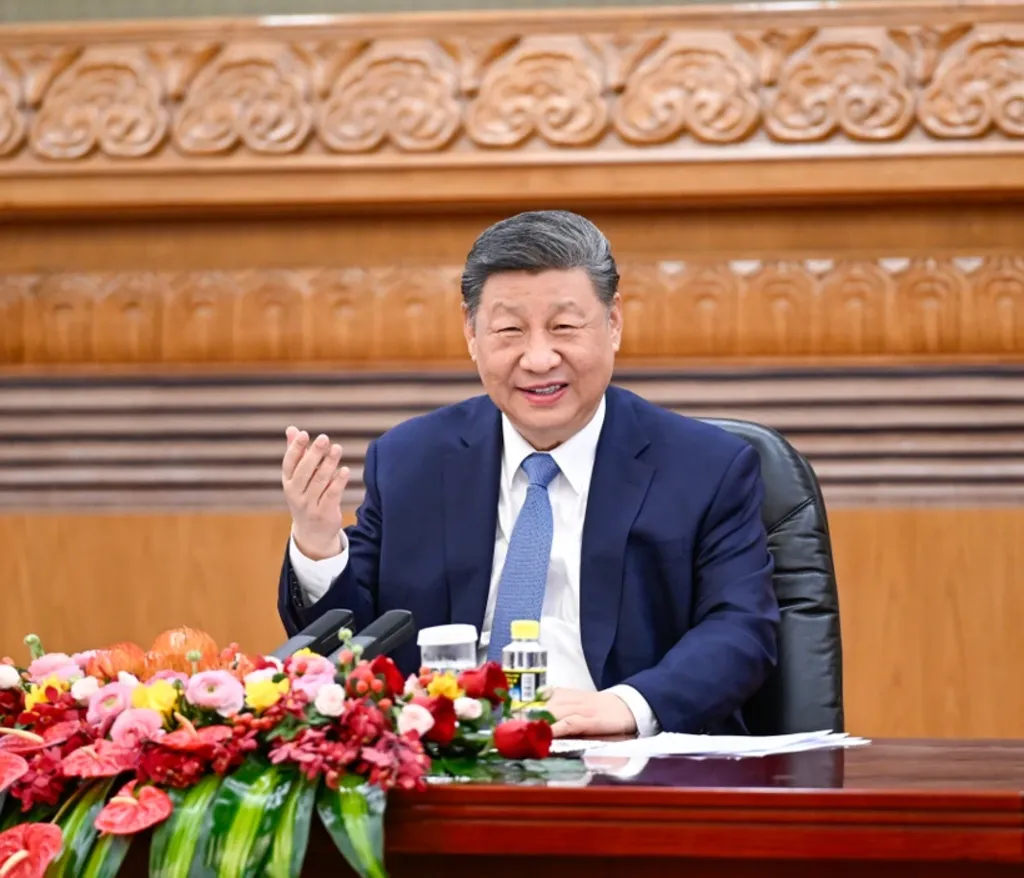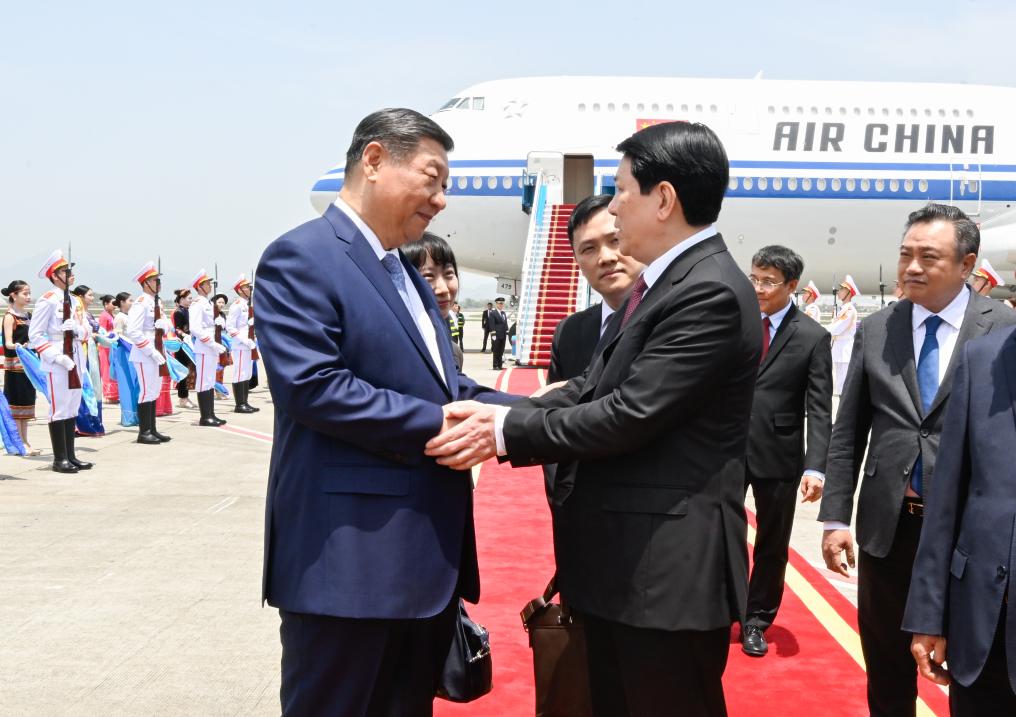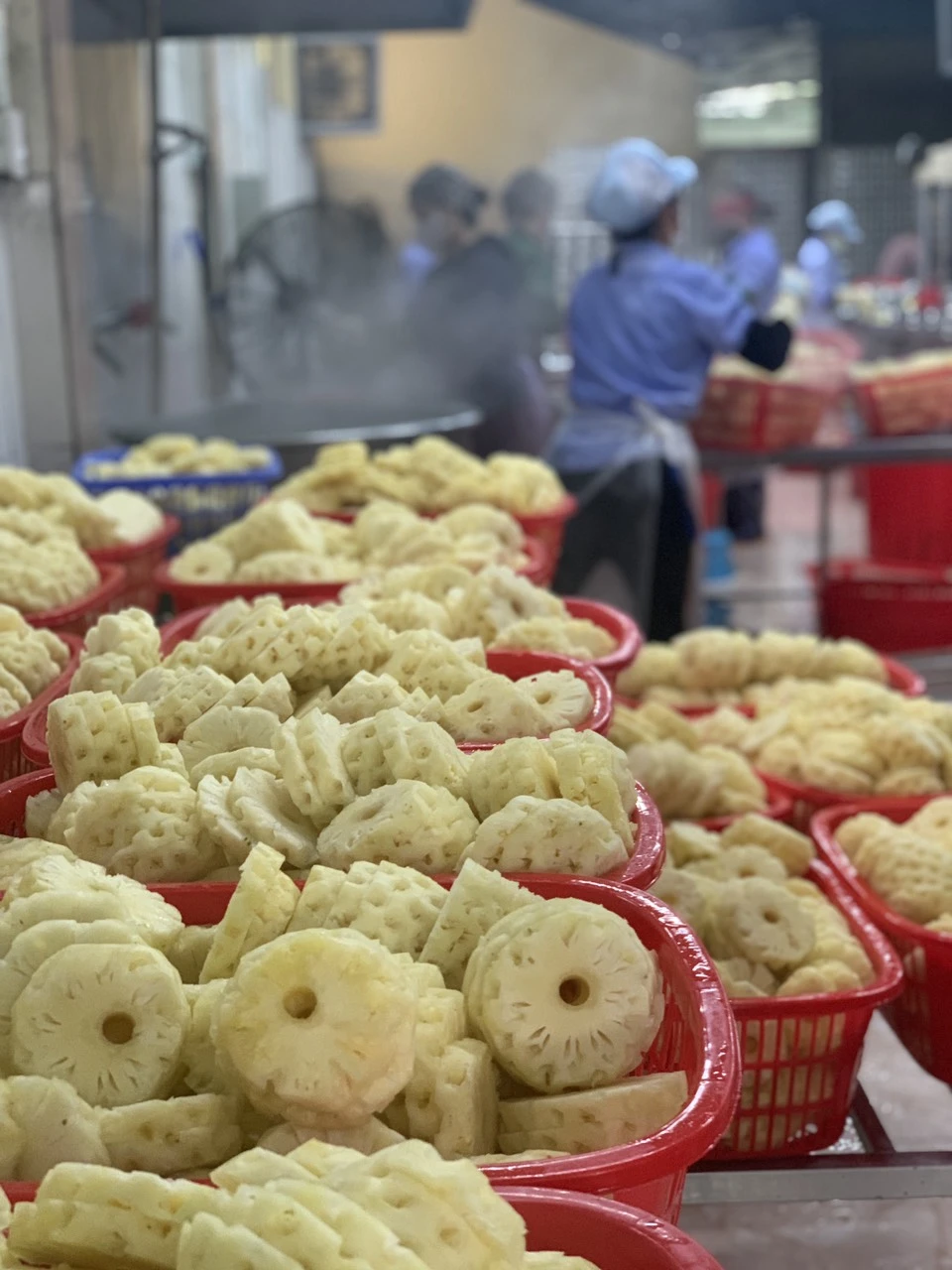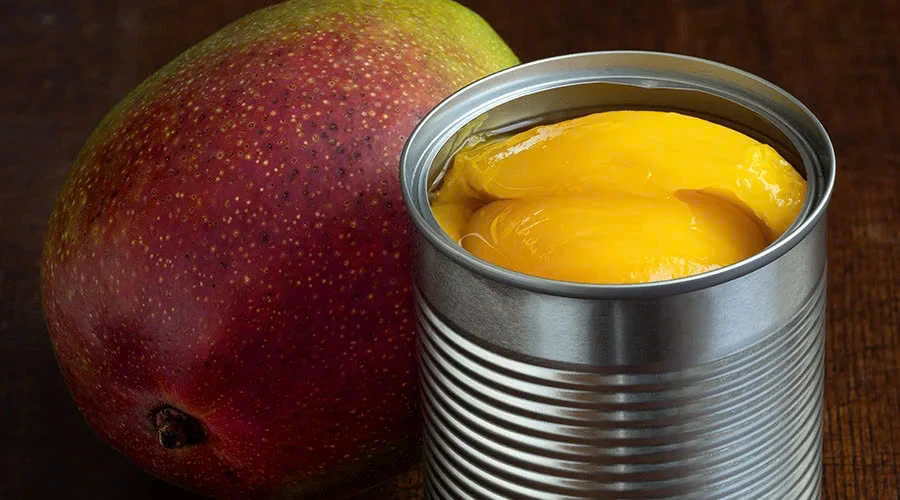CHINESE PRESIDENT XI JINPING’S STATE VISIT TO VIETNAM STRENGTHENS BILATERAL TIES AMID GLOBAL TRADE TENSIONS
A Milestone in Vietnam-China Relations
The visit highlights the enduring bond between Vietnam and China, described as “comrades and brothers” by Chinese President Xi Jinping, rooted in shared history, culture, and socialist ideals. This year’s visit is particularly meaningful as it marks the 75th anniversary of diplomatic ties (January 18, 1950–2025) and has been designated the “Year of Vietnam-China People-to-People Exchanges.” The two nations have maintained a Comprehensive Strategic Cooperative Partnership since 2008, and recent high-level exchanges have further solidified their relationship.
In an article published in Vietnam’s Nhan Dan newspaper, Chinese President Xi Jinping emphasized the shared aspirations of the two nations, stating, “There are no winners in trade wars and tariff wars, and protectionism leads nowhere.” He called for both countries to safeguard the multilateral trading system and maintain stable global supply chains, a pointed reference to U.S. tariffs imposed on Vietnam (46%) and other Southeast Asian nations. Chinese President Xi Jinping’s message aligns with China’s broader strategy to counter U.S. trade policies by strengthening regional alliances.
General Secretary To Lam, in a reciprocal article in China’s People’s Daily, highlighted the long-standing friendship between the two countries, noting their shared geography and cultural similarities. He expressed Vietnam’s commitment to deepening cooperation in defense, security, and infrastructure, particularly railway projects, to further integrate their economies.

Source: China’s top leader pays state visit to Vietnam
Key Outcomes: Cooperation Agreements and Economic Ties
A centerpiece of Chinese President Xi Jinping’s visit was the signing of approximately 40 cooperation agreements covering diverse sectors, including trade, supply chains, railway development, artificial intelligence, and energy. One notable project is the $8.3 billion railway linking Vietnam’s northern port city of Haiphong to China, partially funded by Chinese loans. This infrastructure initiative is expected to enhance connectivity and boost trade, with Vietnam increasingly reliant on Chinese investment to diversify its export markets.
Chinese President Xi Jinping also pledged to encourage Chinese companies to invest in Vietnam and to welcome more high-quality Vietnamese agricultural products, such as fruits and seafood, into the Chinese market. This commitment is significant for Vietnam, which exported $61.2 billion worth of goods to China in 2024, compared to $136.6 billion to the U.S., its largest export market. With U.S. tariffs posing a threat to Vietnam’s export-driven economy, closer economic ties with China offer a buffer against potential disruptions.
During high-level talks with General Secretary To Lam, President Luong Cuong, Prime Minister Pham Minh Chinh, and National Assembly Chairman Tran Thanh Man, Chinese President Xi Jinping stressed the importance of opposing “unilateral bullying” and upholding free trade. The discussions also covered joint maritime patrols and cooperation in green energy, reflecting a broad agenda to deepen bilateral collaboration.

Source: Xi arrives in Hanoi for state visit to Vietnam-Xinhua
Strategic Context: Navigating U.S. Tariffs
Chinese President Xi Jinping’s visit comes at a critical juncture, as U.S. President Donald Trump’s tariffs have sent shockwaves through global markets. Vietnam, a manufacturing powerhouse, faces a 46% tariff on its exports to the U.S., temporarily paused for 90 days. This has prompted Vietnam to seek stronger ties with China, which faces even higher U.S. tariffs of 145%. Chinese President Xi Jinping’s tour, which includes subsequent visits to Malaysia and Cambodia, is seen as a strategic move to rally Southeast Asian nations against U.S. trade policies and present China as a dependable partner.
Posts on X reflect the sentiment surrounding the visit, with users noting Chinese President Xi Jinping’s rejection of protectionism and his push for stronger bilateral relations as a counter to U.S. tariffs. One post highlighted Chinese President Xi Jinping’s call to end the “tantrums” of tariff disputes, emphasizing cooperation in AI and green energy. However, some observers caution that Vietnam must navigate its relationship with China carefully to avoid becoming a dumping ground for Chinese exports redirected from the U.S. market.
Cultural and Historical Gestures
Beyond trade and politics, Chinese President Xi Jinping’s visit carried cultural significance. On April 15, Chinese President Xi Jinping and To Lam visited the Ho Chi Minh Mausoleum, where Chinese President Xi Jinping laid a wreath, honoring Vietnam’s revered leader and symbolizing the historical ties between the two nations. Recalling his 2017 visit, Chinese President Xi Jinping referenced a gift of 19 archival issues of People’s Daily documenting Ho Chi Minh’s 1955 visit to China, a gesture that underscored the personal and historical connections between the two countries.
Looking Ahead
Chinese President Xi Jinping’s visit to Vietnam sets the stage for a new era of Vietnam-China relations, with both nations committed to building a “Community of Shared Future.” As global trade dynamics shift, Vietnam’s balancing act between its economic reliance on the U.S. and its strategic partnership with China will be closely watched. For now, Chinese President Xi Jinping’s charm offensive in Southeast Asia signals China’s intent to lead in a region navigating the uncertainties of a global trade war.
The visit concluded on April 15, with Chinese President Xi Jinping departing for Malaysia and Cambodia, carrying forward his message of regional unity and economic cooperation. For Vietnam, the agreements signed and the reaffirmed friendship with China offer a pathway to resilience in a turbulent global economy.











